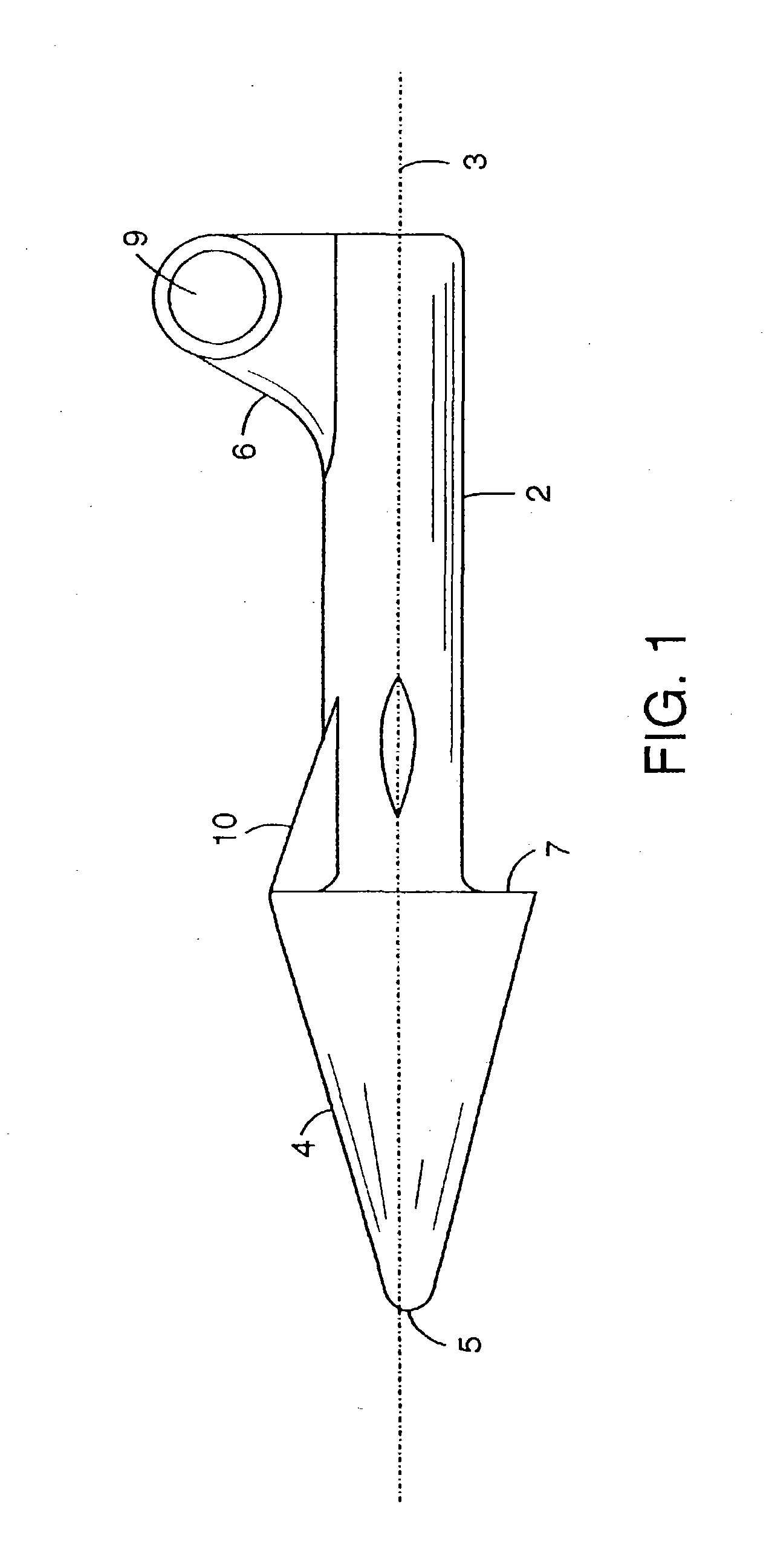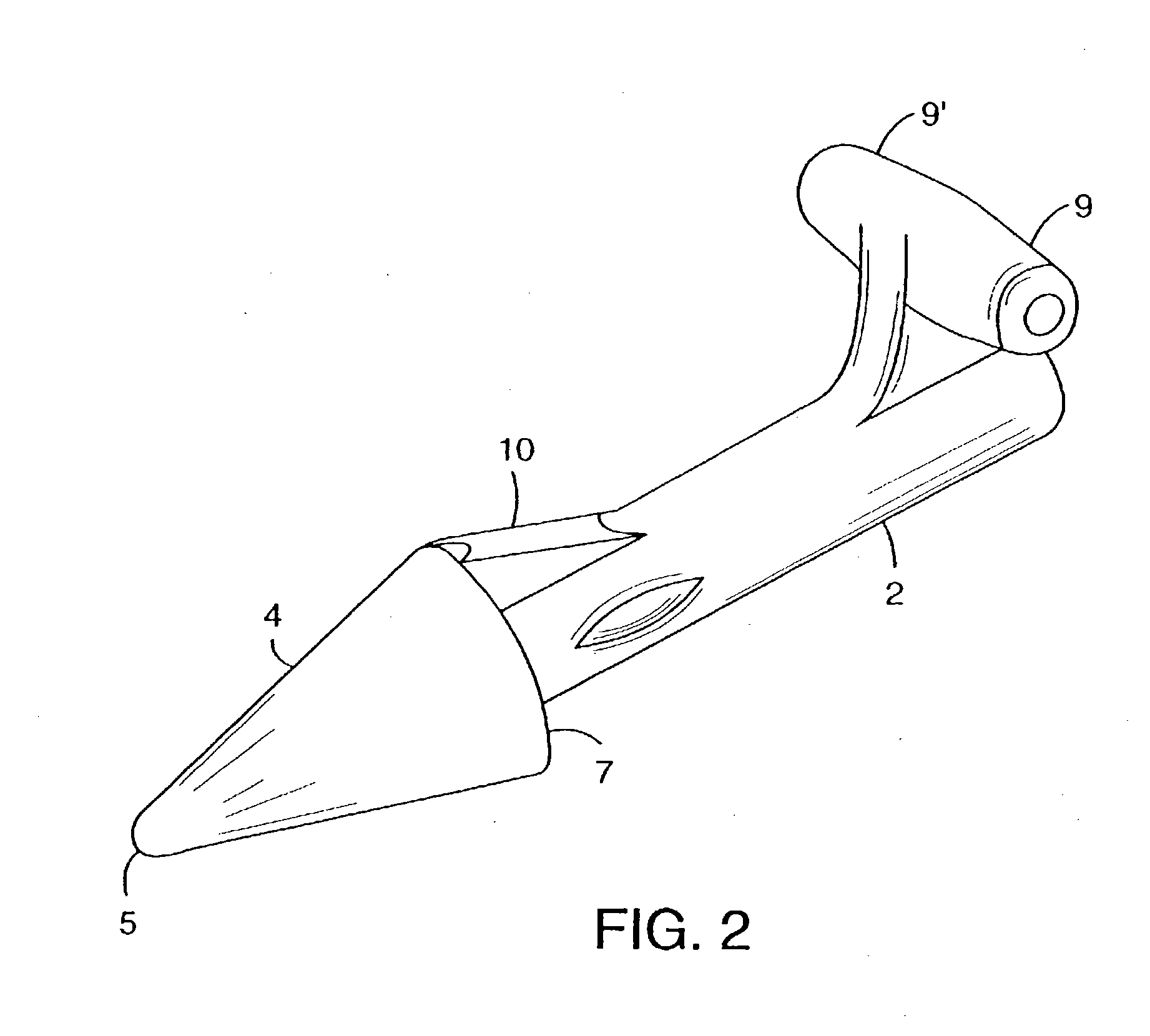Tissue and membrane fixation apparatus and methods for use thereof
a technology of tissue and membrane, applied in the direction of surgical staples, ligaments, prostheses, etc., can solve the problems of difficult grasping and maneuvering with the level of precision required, large time consumption, and large size of suturing instruments, so as to facilitate the surgeon's ability to keep and maintain. , the effect of sanitary disposal
- Summary
- Abstract
- Description
- Claims
- Application Information
AI Technical Summary
Benefits of technology
Problems solved by technology
Method used
Image
Examples
Embodiment Construction
[0078] Referring now to the various figures of the drawings, wherein like reference characters refer to like parts, there is shown in FIGS. 1-5 various views of a surgical tack 1 in accordance with the present invention.
[0079] The tack 1 comprises a generally cylindrical rod 2, having at its distal end a sharp conical head 4 and at its proximal end a tail 6. The tack 1 also may include one or more protruding bumps 12 (see, e.g., FIG. 4), which assist in retaining the tack within a delivery device (e.g., a carrier assembly) as will be described below. The distal tip of the head 4 is sharp, having a minimum manufacturable radius of curvature so that the head can easily penetrate target tissue. Preferably, but not necessarily, the head 4 and the rod 2 share substantially the same longitudinal axis 3. The tack tail 6 preferably extends proximally and axially to the back end of the rod 2, and also preferably extends from the rod to form a substantial angle with the longitudinal axis 3. ...
PUM
 Login to View More
Login to View More Abstract
Description
Claims
Application Information
 Login to View More
Login to View More - R&D
- Intellectual Property
- Life Sciences
- Materials
- Tech Scout
- Unparalleled Data Quality
- Higher Quality Content
- 60% Fewer Hallucinations
Browse by: Latest US Patents, China's latest patents, Technical Efficacy Thesaurus, Application Domain, Technology Topic, Popular Technical Reports.
© 2025 PatSnap. All rights reserved.Legal|Privacy policy|Modern Slavery Act Transparency Statement|Sitemap|About US| Contact US: help@patsnap.com



